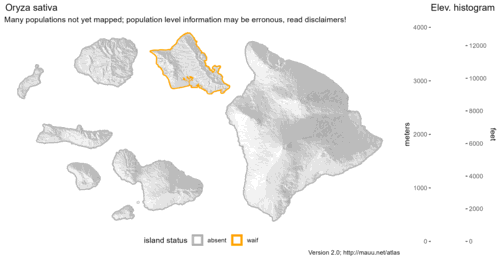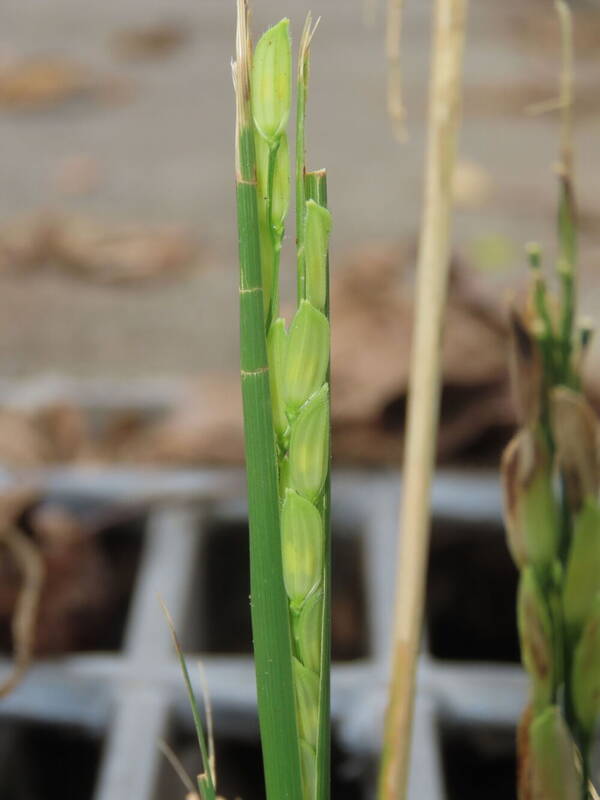Info
Subfamily: Ehrhartoideae
Genus etymology:
Species etymology:
Photosynthetic type: C3 (cool season)
Nativity: questionable - intentional
First recorded in Hawaiʻi:
Map

Inflorescence
 image credit: Aitor
image credit: AitorPlant
 image credit: Hyun-tae_Kim
image credit: Hyun-tae_KimSpikelets
 image credit: chiuluan
image credit: chiuluanDescription
Plants usually annual, sometimes perennial; cespitose, not rhizomatous. Culms 0.3–2 m tall, 4–20 mm thick, erect or ascending, branching at the base, usually rooting at both the lower and submerged upper nodes. Sheaths smooth, glabrous, lowest sheaths usually longer than the internodes, upper sheaths shorter than the internodes; auricles often present, 1–5 mm; ligules (4–)10–36 mm, acute; blades 20–70 cm long, 5–20 mm wide, glabrous, sometimes scabrous. Panicles 10–50 cm long, 1–8 cm wide, often nodding; branches 2–13 cm, ascending or divergent; pedicels 1–7 mm. Spikelets 6–11 mm long, 2.5–4 mm wide, broadly elliptic, sometimes with obvious rows of white papillae, persistent, obliquely articulated with the pedicels. Sterile florets 1.5–3(–10) mm long, ¼–½(–9/10) as long as the spikelets, 0.5–1.5 mm wide. Functional florets: lemmas 6–11 mm long, 2–3 mm wide, glabrous or with stiff hairs to 1.5 mm, apices beaked, beaks 0.3–1(–2) mm, rigid, usually unawned, sometimes awned, awns to 6(15) cm; paleas 1–1.7 mm wide, acute to acuminate or mucronate to 0.5 mm; anthers 1–2.5 mm, white or yellow; styles white, yellow, red, or blackish-purple. Caryopses 4.5–8 mm long, 2–3.5 mm wide, broadly elliptic or broadly oblong, brown, tan, or white; embryos 1.4–1.7 mm. Haplome A. 2n = 24.
(Description source: Barkworth, M.E., Capels, K.M. & Long, S. (eds.) 1993. Flora of North America, north of Mexico. Volume 24. Magnoliophyta: Commelinidae (in part): Poaceae, Part 1. Oxford University Press, New York. 911 pp. http://floranorthamerica.org/Oryza_sativa )